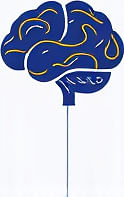Break Reminders for Neurodivergent Professionals in Remote Settings
 by Verner Mayer
by Verner Mayer
Discover how break reminders can improve focus and well-being for adults with ADHD or autism in remote work. This article shares practical strategies to integrate reminders into daily routines, promoting better balance and productivity without overwhelming schedules.

Many adults with neurodivergent conditions, such as ADHD or autism, face unique challenges in remote work environments. These individuals often deal with difficulties in maintaining focus and managing energy levels throughout the day. Break reminders serve as a simple yet effective tool to address these issues, helping to foster a more sustainable work routine.
One key aspect is recognizing the need for regular pauses. For people with autism, sensory overload can build up quickly in a home office setup. Setting up automated reminders encourages stepping away from screens, which allows for mental reset and reduces fatigue. This approach supports overall health by making it easier to spot early signs of exhaustion.
In practice, using apps or device features for reminders can make a big difference. For instance, timer-based tools on phones or computers prompt users at set intervals. These systems work by notifying individuals to take short breaks, such as five to ten minutes every hour. The goal is to create habits that align with personal rhythms, ensuring that work does not dominate the entire day.
Why Breaks Matter for Neurodivergent Adults
Breaks play a crucial role in enhancing productivity. For those with ADHD, constant engagement in tasks can lead to burnout over time. Incorporating structured pauses helps in recharging the mind, making it possible to return to work with renewed energy. This method not only aids concentration but also minimizes errors that might occur from prolonged focus.
Additionally, breaks contribute to emotional regulation. Adults with autism may experience heightened stress in isolated remote settings. By scheduling downtime, individuals can engage in calming activities like walking or deep breathing. Such practices build resilience and promote a healthier mindset during work hours.
Practical Hacks for Setting Up Reminders
First, choose reliable tools that fit individual preferences. Options include built-in calendar apps or specialized software that sends notifications. Start by defining break lengths based on daily needs; for example, shorter breaks for high-focus periods. This customization ensures that reminders feel supportive rather than intrusive.
Another hack involves linking reminders to specific cues. Use sounds or vibrations that are not startling, allowing for a gentle transition from work. Over time, this builds a routine where breaks become second nature, helping to maintain balance without added pressure.
Consider combining reminders with physical elements in the workspace. Placing a visible clock or timer on the desk acts as a visual prompt. For those with ADHD, this external aid can bridge the gap between intention and action, making it easier to step away when needed.
Integrating Breaks into Remote Work Life
In remote setups, blending work and personal life can blur boundaries. Reminders help establish clear divisions, such as ending work sessions at set times. For adults with autism, this structure reduces anxiety by providing predictability in the day.
Try creating a simple daily plan that includes break slots. Use lists to outline tasks and intersperse them with rest periods. For example:
- Morning work block: 90 minutes followed by a 10-minute break.
- Afternoon session: 60 minutes with a longer pause for lunch.
- Evening wind-down: Short reminders to close tasks and relax.
This organization supports long-term productivity by preventing overwork. It also encourages self-compassion, reminding individuals that rest is essential for success.
Overcoming Common Obstacles
Sometimes, sticking to reminders can be tough. Distractions at home might cause delays, especially for those with ADHD. To counter this, start with flexible reminders that adjust based on real-time needs. Gradually, as habits form, adherence becomes easier.
For individuals with autism, unexpected changes in routine can be challenging. Keeping reminders consistent helps maintain stability. Experiment with different frequencies to find what works best, always prioritizing personal comfort.
Building a Supportive Environment
Ultimately, the focus is on creating an environment that nurtures well-being. By prioritizing break reminders, neurodivergent professionals can achieve better work-life balance. This shift leads to improved job satisfaction and overall quality of life.
Remember, everyone’s needs differ. What matters most is finding approaches that resonate personally. With consistent use, break reminders can become a cornerstone of a productive and fulfilling remote work experience.
